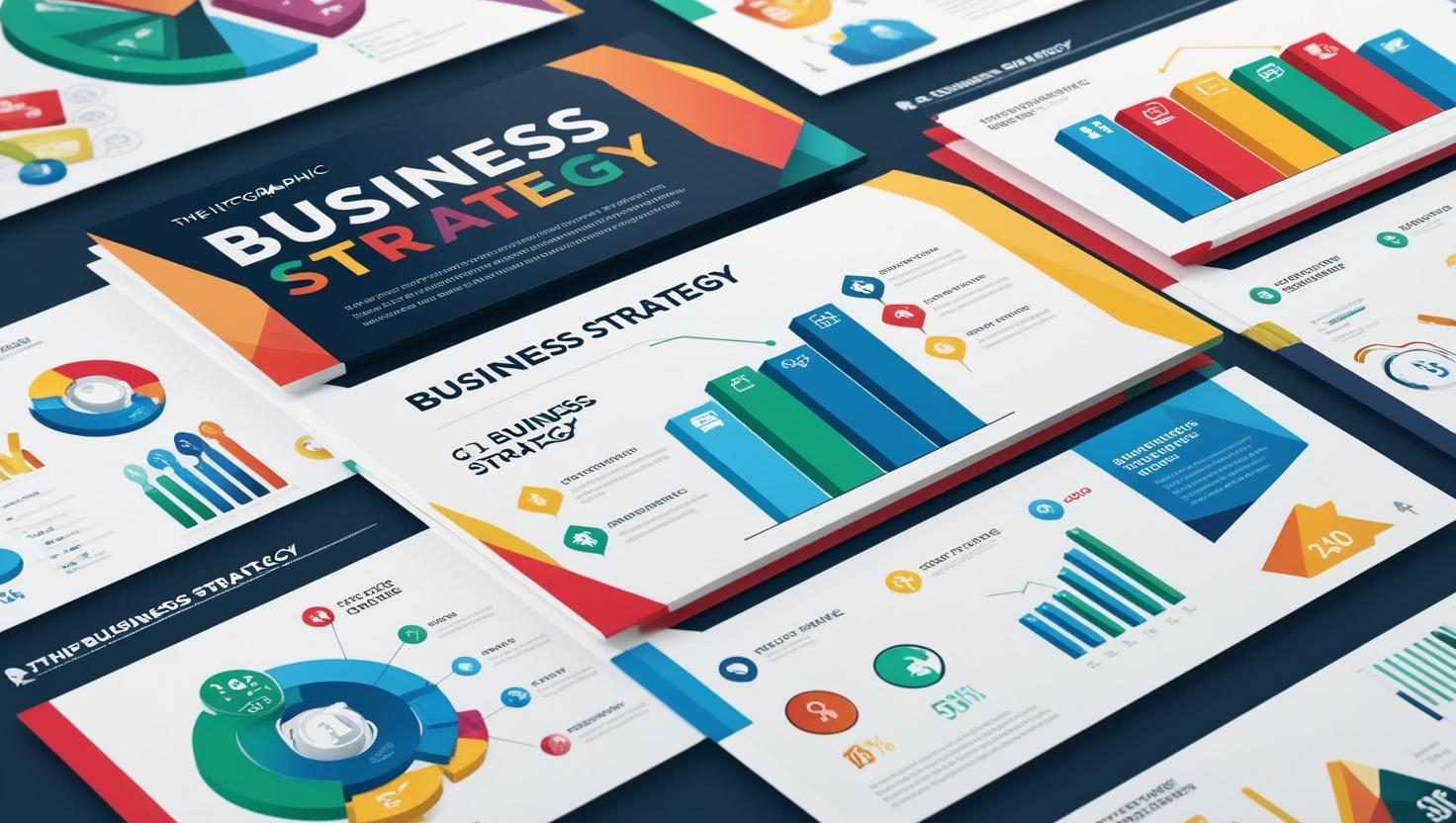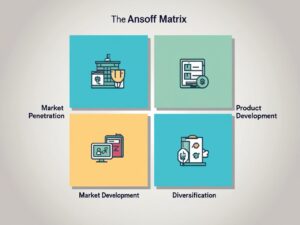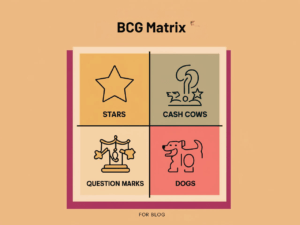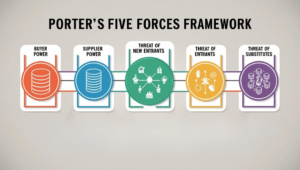

Table of Contents
High-Impact Business Strategy for CXO Decision-Making
In today’s fast-paced business environment, CXOs face critical decisions that define their company’s trajectory. Choosing the right product, entering the right market, and targeting the right customers are essential for sustainable success. A structured High Level Business Strategy Planning approach ensures that these decisions align with long-term growth.
This blog explores data-driven frameworks like Ansoff Matrix, BCG Matrix, and Porter’s Five Forces, offering strategic insights for CXOs to navigate growth opportunities and outperform competitors.
Arena: Where to Compete?
The strategic landscape where a company operates defines its success. CXOs should evaluate:
- Choice of Product: Which products have strong demand and long-term viability?
- Choice of Market: What are the growth trends and competitive intensity in target industries?
- Choice of Customer: Who are the ideal customers, and how do their needs align with the company’s capabilities?
The Ansoff Matrix is a useful tool in High Level Business Strategy Planning, helping CXOs decide between market penetration, market development, product development, and diversification strategies.
Capabilities: What is Your Strength?
Once an arena is chosen, companies must assess their internal strengths:
- Innovation & R&D: Investing in continuous research to create differentiated products.
- Supply Chain & Talent: Ensuring a seamless supply chain and access to top talent.
- Technology & AI: Leveraging AI, cloud computing, and automation for operational excellence.
Opportunities in Emerging Tech & Business Models
Looking ahead, future growth lies in emerging technologies and new business models, which must be integrated into High Level Business Strategy Planning:
- Wearable Tech & Smart Devices: Innovations like Apple Glasses and iGame are transforming digital experiences.
- Enterprise AI Solutions: AI-driven apps for healthcare, education, and enterprise productivity are reshaping industries.
- The Best Computing Experience: Companies must enhance user experience and computing efficiency.
Business Vehicles: How to Scale?
Scaling a business requires selecting the right growth strategy:
- Joint Ventures: Partnering with other companies to leverage mutual strengths.
- Franchises: Expanding through replicable business models.
- Acquisitions: Accelerating growth by acquiring strategic assets.
Companies like Tesla and Apple have successfully implemented these strategies to scale globally.
Economic Logic: Financial Decision-Making
A company’s financial strategy must balance growth and profitability. Key financial metrics include:
- ROE (Return on Equity): Measures profitability from shareholders’ investments.
- ROA (Return on Assets): Evaluates how efficiently a company uses its assets.
- Liquidity Ratios: Current Ratio and Quick Ratio assess short-term financial health.
- Profit Margins: Gross and Net Profit Margins determine overall profitability.
Portfolio Strategy: Managing Multiple Products
The BCG Matrix is a vital tool in High Level Business Strategy Planning for managing product portfolios:
- Stars: High-growth, high-market-share products requiring investment.
- Cash Cows: Low-growth, high-market-share products generating steady profits.
- Question Marks: High-growth, low-market-share products with potential.
- Dogs: Low-growth, low-market-share products requiring strategic review.
Industry Analysis & Competitive Strategy
Understanding market dynamics is crucial. Porter’s Five Forces help CXOs analyze the competitive environment:
- Threat of New Entrants: How easy is it for new competitors to enter?
- Bargaining Power of Suppliers: Can suppliers dictate terms?
- Bargaining Power of Buyers: How much control do customers have over pricing?
- Threat of Substitutes: Are there alternative products?
- Industry Rivalry: How intense is the competition?
Conclusion & Recommendations
To make informed strategic decisions, CXOs must:
- Regularly evaluate their product, market, and customer strategies as part of a structured business plan.
- Invest in innovation while maintaining strong financial discipline.
- Use analytical frameworks like the BCG Matrix, Ansoff Matrix, and Porter’s Five Forces to guide decision-making.
- Align execution with business goals through structured implementation.
A data-driven approach ensures long-term success and a competitive edge in a rapidly evolving market.
Ready to take your business strategy to the next level? Let NextGenSoft.io help you make data-driven decisions for sustainable growth. Visit our blog at NextGenSoft.io for more insights!



